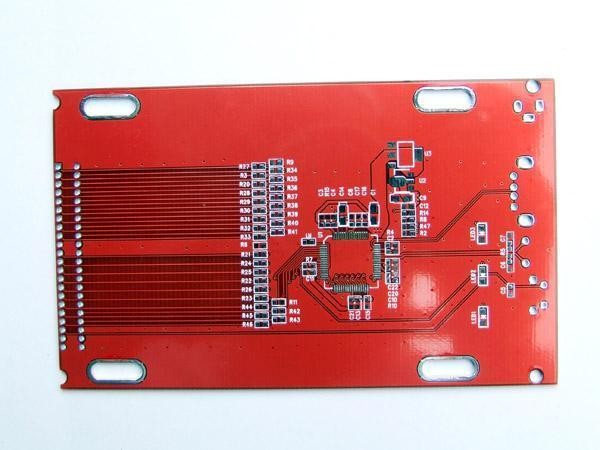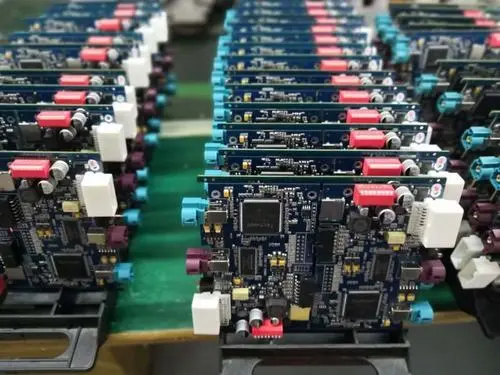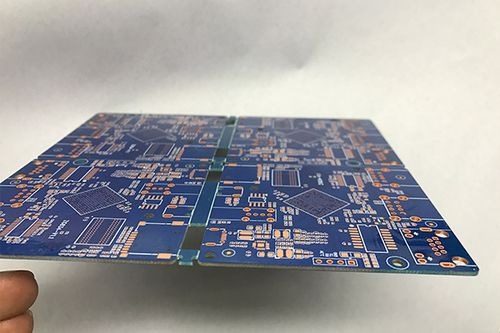
Introduction to PCB design and PCB processing manufacturers: 13 basic rules for equal line PCB layout in pcb design
1. According to the circuit module layout, the relevant circuits that achieve the same function are called a module. The components in the circuit module shall be centralized nearby, and the digital circuit and analog circuit shall be separated at the same time
2. Do not install electronic components within 1.27mm around non installation holes, such as tooling holes and standard holes. Do not install components within 3.5mm (M2.5) and 4mm (M3) around the mounting holes such as screws;
3. Holes shall be avoided under horizontally installed resistors, inductors (plug-in units), electrolytic capacitors and other components to avoid short circuit of via and component shell after wave soldering;
4. The distance between the outer side of the element and the plate edge is 5mm;
5. The outer side of the bonding pad of the mounting element and the outer side of the adjacent inserted element are greater than 2mm;
6. Metal shell elements and metal parts (shielding boxes, etc.) shall not contact other elements, be close to printed lines and bonding pads, and the spacing shall be greater than 2mm. The other side of the positioning hole, fastener mounting hole, elliptical hole and square hole outside the plate is greater than 3mm.

7. Heating elements shall not be close to wires and heating sensitive elements; High heat elements shall be evenly distributed;
8. The power socket shall be as close to the printed circuit board as possible. The power socket and the bus terminal connected to it shall be placed on the same side. Special equal wiring shall be taken to avoid placing power sockets and other welding connectors between connectors to facilitate connection. These sockets, connector solders and power cord designs and cable ties. The distance between the power socket and the welding joint shall be considered to facilitate the plugging and unplugging of the power plug.
9. Other components: all IC components? All are aligned on one side, and the polarity of polar components is clearly marked. The polarity on the same printed board shall not exceed two directions. When there are two directions, the two directions are perpendicular to each other;
10. The wiring on the board surface shall be properly dense. If the density difference is too large, the mesh copper foil shall be filled with a mesh larger than 8mil (or 0.2mm);
11. Can't there be? Through hole to avoid solder loss caused by solder paste loss. Important signal wires are not allowed to pass through socket pins;
12. The patch is aligned on one side, with consistent character direction and packaging direction;
13. Polarization elements shall be as consistent as possible in the direction of polarity markings on the same plate.
2、 Wiring rules of components
1. Wiring shall be carried out in the area ≤ 1mm from the edge of PCB board and within 1mm around the mounting hole.
2. The power cord shall be as wide as possible and shall not be less than 18mil; The signal line width shall not be less than 12 mil; CPU input and output shall not be less than 10mil (or 8mil); Line spacing shall not be less than 10mil;
3. Normal through-hole shall not be less than 30mil;
4. Double in-line: 60ml pad, 40ml hole diameter; 1/4W resistance: 51 * 55mil (0805 surface mount); When PAD is embedded, it is 60 mil, and the aperture is 42 mil; Infinite capacitance: 51 * 55mil (0805? Surface mount); PAD line 50mil, aperture 28mil;
5. The power line and the ground shall be radial as far as possible, and the signal line shall not have loopback. Introduction to PCB design and PCB processing manufacturers: 13 basic rules of equal line PCB layout for pcb design.









